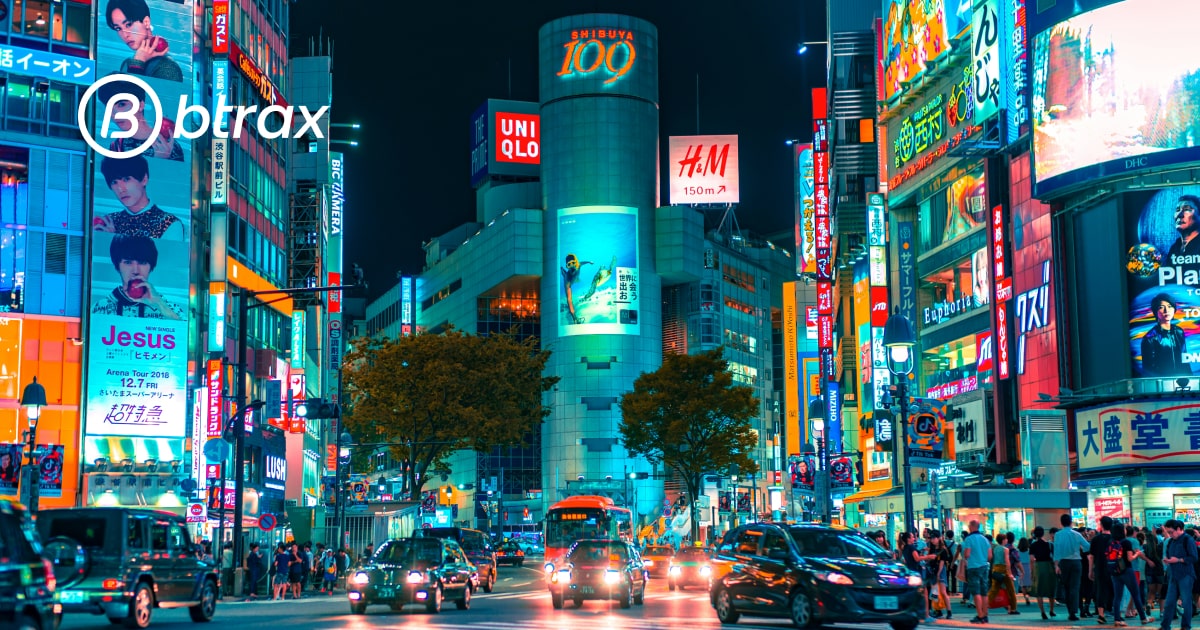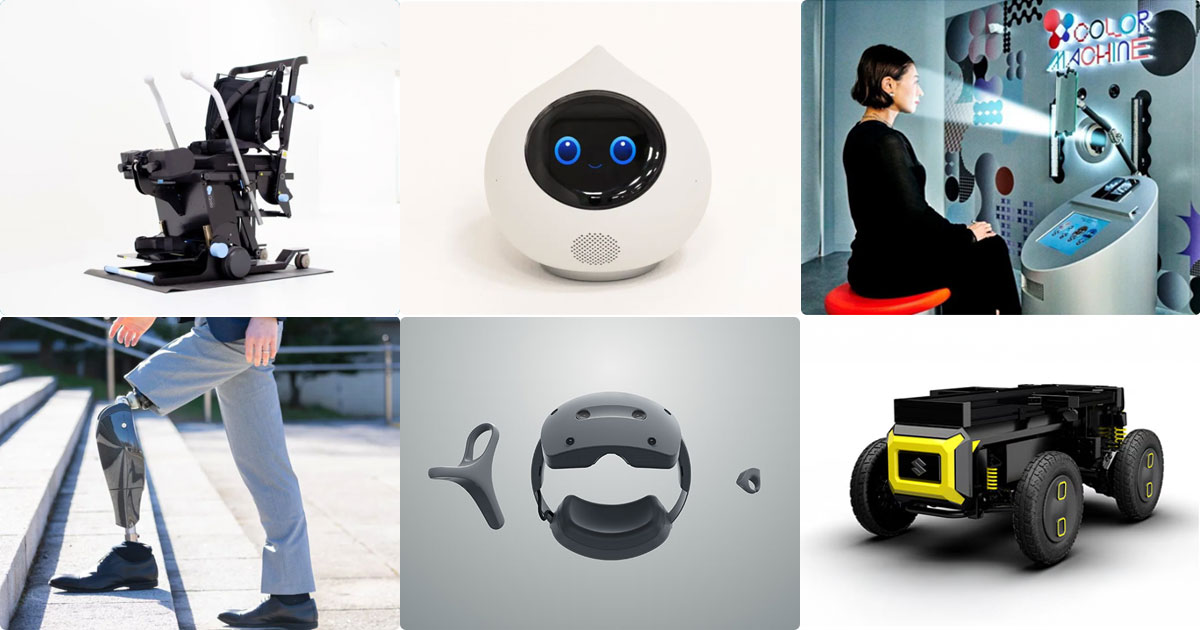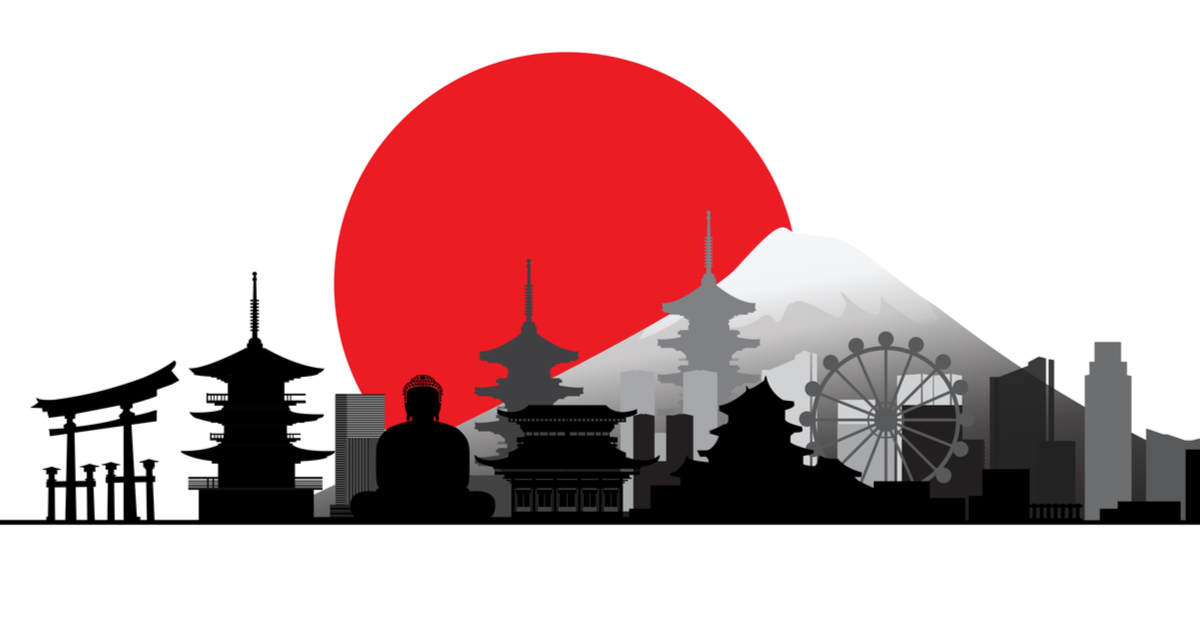
Btrax Design Company > Freshtrax > Japan by the Nu...
Japan by the Numbers: 67 Insightful Japan Facts to Grasp Consumer Behaviors
If you are looking to integrate your business into the Japanese market, skimming online for quick answers and visiting Japan alone won’t lay a sturdy foundation for an informed understanding of the Japanese consumer. Looking at quantified insights, however, shows us what conditions facilitate the demands of daily life in Japan, and we can begin to understand consumers as individuals whose lives have a margin for change and innovation. And that’s where your company comes in. Employing data-driven knowledge in your company’s strategy to expand to Japan reflects your business’ ability to understand the nuanced Japanese market. So, to help you and your business get started, btrax compiled some basic facts about Japan and the people who live there.
Geography and Population
The following numbers provide basic information about Japan’s physical landscape and demographics to contextualize how different people may experience life there.
- Japan’s land area is 145,900 mi²—about 89% of California’s. (MLIT)
- Japan is made up of 6,852 islands. (Journal of Marine and Island Cultures, 2012)
- The 4 main islands are Hokkaido, Honshu, Shikoku, and Kyushu. (MLIT)
- Japan is divided into 47 prefectures. (Japan Visitor)
Even though Japan is comparable in size to California, the division of its long stretch of land into four main islands and 47 prefectures means that people living on different islands experience different instances of the Japanese lifestyle, and those instances become more refined within each prefecture. For example, winters in Hokkaido can drop to -20°C while winters in subtropical Okinawa are mild. This means, for instance, if you are in the clothing business, you will need to have different merchandising or marketing strategies based on geography. Furthermore, language and dialect can vary in different areas. For instance, to say “thank you,” someone in Tokyo might say “arigatou” while someone from Kyoto would say “ookini.” This means that you might want to change your tone of voice accordingly for your brand communication.
- The population of Japan is about 126.8 million (3 times greater than California’s population). (Worldometers, 2019)
- The population of Japan is decreasing at a rate of about 0.27%, predicted to reach 101.92 million by 2050. (World Population Review, 2019) (Statistics Bureau Japan, 2019)
- 36% of Japan’s population is over 65 years old. (Ipsos, 2018)
- Besides Tokyo’s 23 wards (9.2 million), Yokohama (3.72 million), Osaka (2.69 million), and Nagoya (2.30 million) are the most populous cities in Japan. (Statistics Bureau Japan, 2018)
- Tokyo’s greater metropolitan area spread over 3 prefectures has a population of over 37.468 million, making it the most populous urban area in the world. (World Population Review, 2019)
- Over 550,000 foreign residents live in Tokyo. (Nippon, 2019)
- Foreigners make up about 2% of Japan’s population. (Japan Times, 2019
- Foreign residents are mainly from China, South Korea, and Vietnam. (Japan Times, 2019)
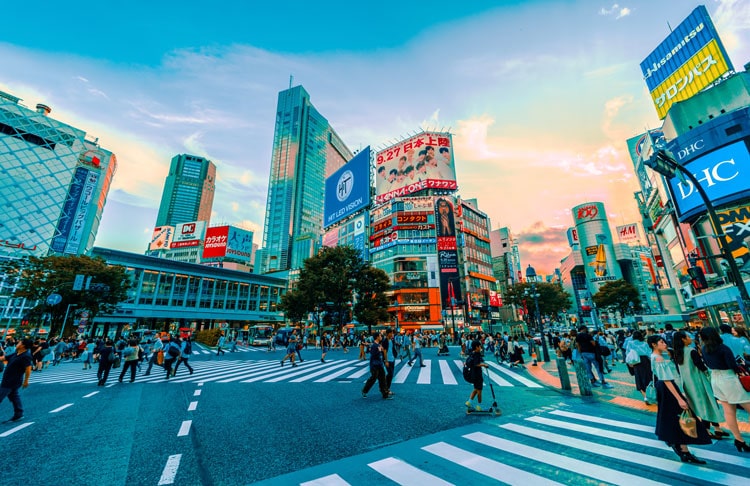
Shibuya Crossing Intersection—up to 500,000 people cross these streets a day!
The greater metropolitan areas of each Tokyo and Osaka are home to over 10 million people, probably an unsurprising fact if you’ve ever tried riding the train in these cities at rush hour. Besides crowded trains, population and geography can affect several aspects of daily life. For example, in order to accommodate overflowing urban populations, apartments and homes in these areas are extremely narrow. Narrow homes fit narrow fridges and narrow washing machines, which can only hold so much. As such, people leave room in their schedules to complete tasks like grocery shopping and laundry several times a week. A simple data point like population density can lead one to understand a resident’s shopping and washing behaviors.
Work, School, and Pastime
Much of a consumer’s time is spent at work, school, or partaking in extracurriculars and hobbies. Here are data that quantify those work, school, and pastime environments, which will help identify the areas in which the lives of employees, students, and anyone who enjoys activities outside of those roles can be made a bit easier or more enjoyable.
Work Environment
- 67 million people are employed including the self-employed. (Statistics Bureau Japan, 2019)
- The unemployment rate in Japan is 2.4%. (Statistics Bureau Japan, 2019)
- Employees work an average of 18.6 days a month. (Statistics Bureau Japan, 2018)
- About 15% of men in their thirties and forties work 60 hours or more per week. (Cabinet Office Japan, 2018)
- Nearly 46% of employees in Japan are willing to work more than required for the company’s improvement. (Adecco, 2018)
- The average salary in Japan is about $40,000. (OECD, 2018)
- There is a 24.5% wage gap between men and women. While men in their 30s earn an average of about $45,000, women in their 30s earn an average of $35,000. (OECD, 2017) (DODA, 2018)
- 50.6% of companies with 5 or fewer employees don’t have a dress code. 3% of companies with between 3,000 and 10,000 employees don’t have a dress code. (NRC, 2018)
- 28.6% of management and executive workers feel that the clothes employees wear have no impact on their work quality and productivity. (NRC, 2018)
- A little over 47% of employees feel pride in their workplace. (Adecco, 2018)
【Related Article】10 Cultural Contrasts between US & Japanese Companies
A common complaint from Japanese adults is about the high demands of work life. Often, they have strict dress codes and work over 40 hours a week. With such burdens placed on employees in Japan, less than half are willing to work beyond expectations.
【Related article】Top 10 Japanese Tech Companies
Education
- There are about 780 universities in Japan. 86 are national, 90 are public, and 604 are private. (Statistics Bureau Japan, 2018)
- The top universities in Japan are Kyoto University, University of Tokyo, Tohoku University, Kyushu University, Hokkaido University, and Nagoya University. (Times Higher Education, 2019)
- The average yearly educational cost of public high school is about $4,150. (Nippon, 2018)
- 57.9% of high school graduates attend university. (University Journal Online, 2018)
- Excluding admission and accommodation fees, tuition at the University of Tokyo starts at around $4,486 per year. (Times Higher Education, 2019)
- People over 15 years old spend an average of 33 minutes per weekday on schoolwork outside of school. (Ministry of Internal Affairs and Communications, 2016)
- About 13% of people over age 10 study a foreign language. (Ministry of Internal Affairs and Communications, 2016)
- Japan’s English proficiency is low with an EF English Proficiency Index of 51.80. It’s ranked 49 out of 88 countries. (EF, 2018)
Education is highly valued in Japanese society with high average educational expenditures and a proliferation of universities. However, many Japanese people are hoping for reformation in education to aim for better skills in expressing one’s own opinion as well as English proficiency.
Leisure and Entertainment
- Japanese households have a net adjusted disposable income of about $29,798. (OECD, 2019)
- 34% of Japanese listed travel as their hobby, 30% listed music, and 20% listed sports. (Statista Global Consumer Survey, 2019)
- Households spend an average of about $103 per month on eating out. (Statistics Bureau Japan, 2019)
- Nishiyama Onsen Keiunkan in Yamanashi Prefecture is the oldest hotel and 2nd oldest business in the world, operating since the year 705. (Guinness World Records, 2011)
- Amazon Prime Music (Amazon) is the leading online music streaming service, with a 36.4% share of users compared to Spotify’s 16.5% and LINE MUSIC’s 11.3%. (Impress, 2018)
- About 38 million (almost 30%) Japanese people like going for drives in their free time. (Nichiyukyo, 2018)
- 24% of survey respondents do not have a car permanently available in their household. (Statista Global Consumer Survey, 2019)
- The most popular sport to watch (either on TV or in-stadium) in Japan is baseball. (Mitsubishi UFJ Research and Consulting, 2018)
- The most popular athletes in Japan are Shohei Ohtani (baseball), Yuzuru Hanyu (figure skating), Ichiro Suzuki (baseball), Naomi Osaka (tennis), and Kei Nishikori (tennis). (Mitsubishi UFJ Research and Consulting, 20189)
- The age group with the highest karaoke participation rate (16.7%) is 20-29 years old, followed by 60-69 years old (16.3%). Japanese people go to karaoke 11.4 times a year on average. (Japan Productivity Center, 2018) (MECSST, 2017)
- 72% of people who visit the Disney theme parks in Tokyo are 18 years or older. (Oriental Land Company, 2018)
- The highest-grossing films in Japan are Spirited Away, Titanic, Frozen, Your Name, and Harry Potter and the Sorcerer’s Stone. (IMDb, 2016)
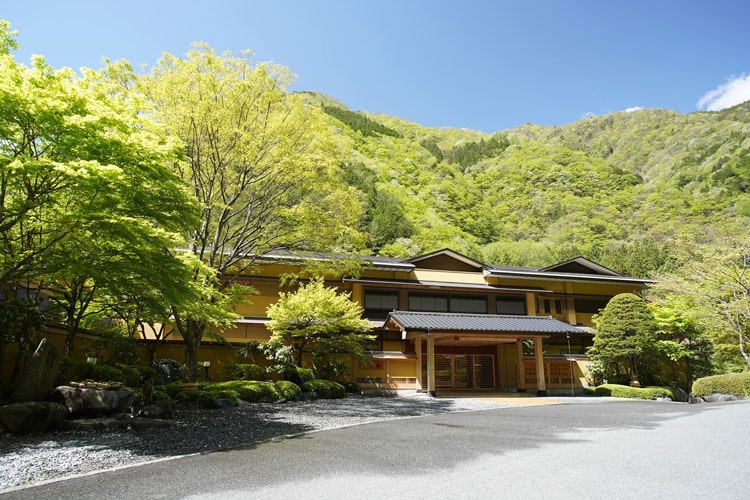
Nishiyama Onsen Keiunkan, the world’s oldest hotel in Yamanashi (Photo credit)
People in Japan are willing to spend time and money on activities they enjoy. Many of them love music, food, and sports and will pay for streaming services, dining out, or watching games at stadiums. As people become older, their days often become free, and they can participate in activities like karaoke, gardening, or golf.
Digital Experience
In the hours between work, school, hobbies, and sleep, people spend time on their phones, commuting, eating, running errands, going to events, and more. Statistics that specify how they spend those hours and the devices, systems, and conditions that allow them to do so reveal what is working well, what things are important to consumers, and any openings for enhancing their experiences. Here are some of those stats.
- Over 118.9 million people (about 94%) in Japan use the Internet. (We Are Social, 2019)
- Japan’s average broadband speed is 42.77 Mbps. (Atlas and Boots, 2019)
- The general mobile population is predicted to be about 107.2 million. (eMarketer, 2013-2015)
- The 3 major mobile phone operators are NTT docomo, au, and Softbank. Approximately 36% use NTT docomo, about 25% use au, and about 19% use SoftBank. (Cint, 2018)
- Smartphone population was predicted to be just over 70 million in 2018. (Markezine, 2019)
- 31% of Japanese use smartphones for playing video games, 18% use PC/laptops, and 15% use non-mobile game consoles (e.g. Xbox). (Statista Global Consumer Survey, 2019)
- Windows’ market share is about 40%. iOS’ market share is about 30%. (StatCounter, 2018)
- People in Japan spend about 50 minutes per day on social media. (Marketing Research Camp, 2018)
- The most popular social network in Japan is LINE. Over 80 million people in Japan use it. (LINE, 2019)
【Related article】The Ultimate Guide to Using the LINE App for Business
Many people in Japan rely on their phones for communication, online shopping, and playing video games. If you board a train in Japan, you can look around to see nearly everyone using their phones. They are often looking at LINE messages, online window-shopping, or playing game apps.
Health and Diet
- People in Japan visit the doctor 13 times a year on average. (OECD, 2018)
- The life expectancy of females in Japan is 87 years. For males, it’s 81 years. (World Health Organization, 2016)
- 35.1% of men and 27.4% of women exercise on a regular basis. (MHLW, 2016)
- 31.3% of men and 20.6% of women are obese, ratios which haven’t changed much in the last 10 years. (MHLW, 2016)
- The most popular fast-food chains are McDonald’s, Mister Donut, and KFC. (Cint, 2018)
- The most preferred non-alcoholic drink is oolong tea, then green tea. (Dimsdrive, 2017)
Even though the most popular food chains include places like McDonald’s and KFC, a large portion of the Japanese population stays away from eating out at fast-food restaurants. Instead of carbonated, sugary drinks, you’ll often see people reaching for bottled unsweetened tea or black coffee at convenience stores. In addition, with so much of the population commuting long distances to work and school, they often walk a lot, climb flights of stairs, and spend a decent amount of time standing on trains. Given these conditions, it’s no surprise that Japanese people live some of the longest lives in the world.
Efficiency and Transportation
- There are over 56,000 convenience stores in Japan. (Lawson, 2018)
- The 3 convenience store companies with the most number of stores in Japan are 7-Eleven, Lawson, and Family Mart. (FamilyMart, 2018)
- 7-Eleven sells 2.2 billion onigiri annually. (Japan Times, 2019)
- Convenience stores offer services beyond selling snacks and drinks. Here are some things you can do there (Japan-Guide, 2018):
- Copy/scan/fax
- Print photos
- Buy tickets to concerts, sports, movies, etc.
- Withdraw money from an ATM
- Send mail, packages, luggage, etc.
- Use free wi-fi
- Pay bills
- The Tozai Line in Tokyo is the most crowded rail line in Japan at a 199% capacity at rush hour. (SoraNews24, 2018)
- The busiest station in the world is Shinjuku Station with about 3.5 million daily users. (Nippon, 2018)
Efficiency and quality services are extremely important to Japanese consumers. People have places to be—made clear by the sheer number of daily train passengers—and they rely on convenience stores not only for buying lunch or iced coffee, but also for mailing luggage, copying documents, and buying movie tickets to name a few.
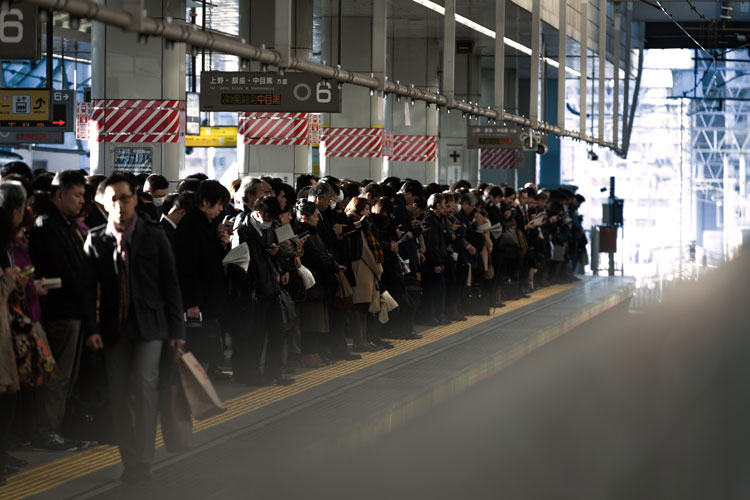
A busy station during a morning rush
Beliefs and Values
- About 80% affiliate with Shinto, and about 67% affiliate with Buddhism. Many Japanese identify as both Shinto and Buddhist. Less than 2% of the population is affiliated with Christianity. (CIA, 2017)
- About 57% of individuals prefer to spend time with a significant other on Christmas. (Rakuten Insight, 2018)
- 64% of people are concerned about the impact disposable and non-recyclable items have on the environment. (Ipsos, 2019)
- Approximately 17% of individuals have stopped buying goods with non-recyclable packing. (Ipsos, 2019)
In Japan, people often participate in religious activities like praying to Shinto gods and visiting temples or shrines. They buy things like omamori—amulets that are believed to provide luck or protection; they write their wishes to the gods on ema—wooden plaques hung at shrines for the gods to receive. But if you asked Japanese people if they are religious, many would say no. There are many reasons why they buy paper fortunes or pray, but piety is one of the more uncommon ones. As such, holidays like Christmas are often spent on romantic dates viewing Christmas lights with significant others instead of going to a sacred site or spending it with family.
The importance of knowing basic information about Japan
Seeing, feeling, and hearing Japan firsthand paints a bigger picture of its consumers’ daily experiences, but data bring the image into focus with detailed information on the Japanese market. Businesses that measure the Japanese market in these qualitative and quantitative ways can cognizantly and adequately provide services to consumers in Japan. Statistics are excellent starting points for creating personas and imagining the users you want to target while native expertise on the Japanese market can guide your company from that outset to a successful launch in Japan.
#####
With these 67 basic facts about Japan, we hope that you have gained a better understanding of the Japanese market. btrax is a San Francisco- and Tokyo-based company with a mission to help brands truly understand Japanese consumers and effectively enter the Japanese market. We not only provide quantitative data but also qualitative data gathered from user interviews and testing that can help you understand your customers in Japan. If you’re looking to expand your business to Japan, contact us!
Sign up for our newsletter if you enjoyed this article and want more insights on the Japanese market. We look forward to connecting with you!
Check Out Our FREE E-Books!
Discover our FREE e-books packed with valuable research and firsthand insights from industry experts!
Dive into our collection below, and stay tuned – we’re constantly adding new titles to keep you ahead of the curve.
- Big in Japan: Global Brands Thriving in the Japanese Market, Vol. 1
- A Guide to the Promotional Seasons in Japan
- What I Wish I Knew Before Entering the Japanese Market
- 100+ Facts to Understand the Motivations Behind Japanese Behaviors
- Insights on Japan’s Changing Workstyle
- Insights into Japan’s E-Commerce and Direct to Consumer (D2C) Market


